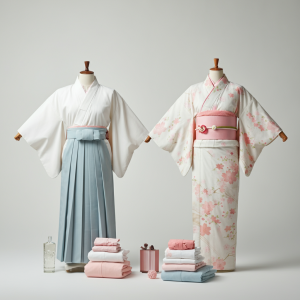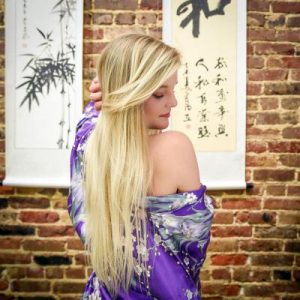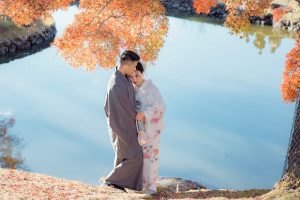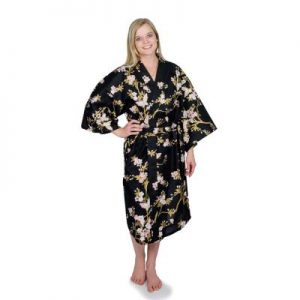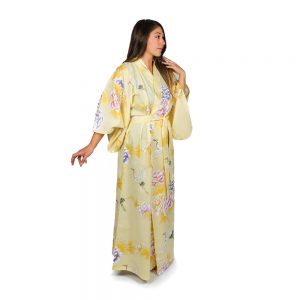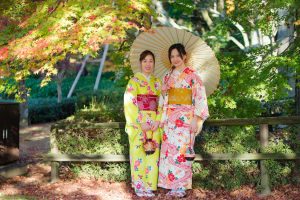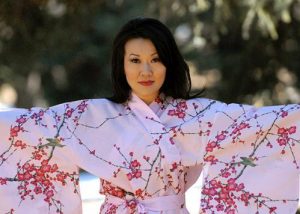We recently reached out to our community to ask a simple question: What do you love about Chopa.com? The response was incredible, and the feedback we received painted a clear picture of why our customers choose us for authentic Japanese garments. We wanted to take a moment to share what we learned and express our gratitude for your continued trust.
For over 30 years, our mission has been to share the beauty and comfort of Japanese culture through high-quality kimonos, yukatas, and happi coats. Your feedback confirms that our commitment to authenticity, service, and value is what truly sets us apart. Here’s a closer look at what you told us makes Chopa.com your go-to source.
A Legacy of Trust and Quality
One of the most common themes in your feedback was trust. Chopa.com was founded in 1994, and as an employee-owned business, we have a personal stake in every order. The name “Chopa,” meaning “offering” in Tibetan, reflects our core philosophy: to offer you the very best in quality, service, and satisfaction.
Your survey responses showed that our three decades of experience matter. Customers appreciate knowing they are buying from a retailer with deep expertise in Japanese textiles and a proven track record of reliability. This long-standing heritage is the foundation of the trust you place in us every time you shop.
An Inclusive Selection for Every Body
We believe everyone should be able to enjoy the comfort and elegance of a well-fitting kimono or yukata. That’s why we’ve worked hard to build one of the largest and most inclusive selections in the United States. Your feedback highlighted how much you value our diverse range of sizes and styles.
Finding Your Perfect Fit
Many of you mentioned the difficulty of finding authentic Japanese robes that fit properly. We heard you, and that’s why our collection includes over 100 styles with options for everyone:
- Plus Sizes: Generously cut for comfort and a graceful drape.
- Short & Petite Lengths: Designed to prevent tripping or overwhelming smaller frames.
- Tall & Big-and-Tall: Extra length and room for a perfect fit.
From men’s and women’s to children’s sizes, our goal is to ensure you find a garment that feels like it was made just for you.
Styles for Every Occasion
Whether you’re looking for a lightweight cotton yukata for lounging on a summer evening or a more elegant and dressy kimono for a special event, our selection has you covered. You told us you appreciate the variety, from classic, timeless designs to modern, vibrant patterns that suit every aesthetic and function.
Authentic Quality at an Affordable Price
How do we offer authentic, made-in-Japan garments without the high price tag? Your survey responses showed a keen appreciation for our pricing model. By importing directly from manufacturers in Japan and sourcing in large volumes, we cut out the middlemen. This allows us to pass those savings directly on to you. In times of great market volatility, we can hedge foreign currency needs to further maintain lower prices.
Customers noted the value of our transparent pricing. When you shop with us, there are no surprise customs or import fees. We also offer free shipping within the U.S. on all orders of $75 or more, making it even more affordable to bring home a piece of Japanese culture.
Fast and Reliable U.S.-Based Fulfillment
In a world of international shipping delays, quick and reliable delivery is more important than ever. Your feedback overwhelmingly praised our fast fulfillment. Because our warehouse is located in Northwest Florida, we have complete control over the quality and handling of every item.
Most orders ship within just one business day, with an average delivery time of 2–4 days across the United States. You told us you love knowing that your order will arrive promptly, whether it’s a gift for a loved one or a treat for yourself.
Customer-First Policies and a Seamless Experience
We strive to make your shopping experience as simple and enjoyable as possible. The survey results confirmed that our customer-centric policies are a major reason you choose to shop with us again and again.
Easy Returns and No-Hassle Shopping
We understand that sometimes a purchase isn’t quite right. Our easy return policy allows you to send back any unworn item in its original packaging without a fuss. We also don’t force you to create an account to place an order. You can shop freely as a guest, with the option to create an account only if it’s convenient for you.
Secure and Transparent Checkout
Your security is our priority. We accept all major credit cards and PayPal through a secure SSL-encrypted checkout process. We never store your payment details, ensuring your sensitive information remains safe.
A Trusted Part of the Community
Our connection with you goes beyond transactions. We are proud to have been recognized by the Panama City Beach Award Program as the Best Online Retailer in the Kimono & Yukata category for several years running. This local recognition is a testament to our commitment to excellence. More importantly, we value the vibrant community we’ve built through our social media channels, blog, and direct feedback from customers like you.
The Chopa.com Difference: A Summary
Your feedback has been invaluable, confirming that our efforts are hitting the mark. Chopa.com stands out because of our heritage, inclusive selection, fair pricing, and unwavering focus on the customer. Whether you are buying your first yukata, searching for a meaningful gift, or outfitting your business, you can count on us for quality, culture, and convenience. Thank you for being part of our journey.



